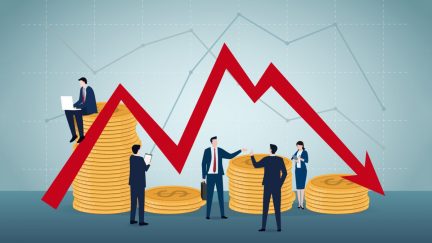Never miss a story — sign up for PLANSPONSOR newsletters to keep up on the latest retirement plan benefits news.
Regular Contributions Help Participants Reach Higher 401(k) Account Balances
An EBRI and ICI report finds contributions were the top factor increasing balances, more so than benefits paid or investment returns.
Consistent retirement plan participants, or those who had retirement plan accounts at the end of each year from 2010 to 2018, are generating steady savings in their account balances, according to a study from the Employee Benefit Research Institute (EBRI) and the Investment Company Institute (ICI).
The report provides an analysis of 401(k) plan participants from the EBRI/ICI 401(k) database and found that the median 401(k) plan account balance for consistent participants rose at a compound annual average growth rate of 17.3% from 2010 to 2018, generally exceeding the growth rate for all participants included in the database (i.e., including those who didn’t have a retirement account at the end of each year from 2010 to 2018).
EBRI and ICI say contributions, investment returns and withdrawal or loan activity can potentially influence account balances. Contributions were the top factor increasing balances—adding about $352 billion a year from 2010 to 2017—while benefits paid, including rollovers, averaged $346 billion. Investment returns varied year-to-year, according to the report. Returns had no impact on assets in 2011 and 2015 but boosted assets during the stock market high from 2012 to 2014, and then again in 2016 and 2017.
“Because 401(k) participants tend to continue contributing to their plans year in and year out, contributions follow a relatively steady path from year to year,” says Steven Bass, an economist at ICI and an author of the report. “However, investment returns are dependent on asset markets, particularly stock markets, and so they fluctuate from year to year.”
The study also found trends in different employee groups. For example, a participant’s age and tenure had an effect on their consistency and account balance. Consistent participants who were followed between 2010 and 2018, by definition, had at least eight years of tenure in 2018. None had spanned five or fewer years in their role, 10% had more than five to 10 years, 54% had more than 10 to 20 years and 36% had a tenure of over 20 years.
Still, younger participants experienced the largest percent increase in average account balance between year-end 2010 and year-end 2018, according to the study. The average account balance for 401(k) participants in their 30s rose 450.8%. Those who were in their 60s experienced smaller growth at 122.9%. According to Bass, younger individuals and those with less tenure accumulated their balances by regularly contributing to the account, while older participants with a longer tenure were driven more by investment returns. In fact, investment returns generally accounted for most of the change in accounts with larger balances, according to the study.
Additionally, younger participants were more likely to favor equity funds and target-date funds (TDFs), while older participants invested in fixed-income securities such as bond funds, money funds, or guaranteed investment contracts (GICs) and other stable-value funds.
Loan and withdrawal activities also had an impact on 401(k) account balances. The report finds that older participants—those in their 60s—tended to make withdrawals as they reached retirement.
You Might Also Like:
Pennsylvania PSERS Ends Contract With Aon, Certifies Decrease in Contribution Rates
How Do Maximum Elective Deferrals Work in a 403(b)/457(b) Combination?
Public Pensions’ Assumed Rate of Return Falls Below 7%
« Supreme Court Asked to Review Sufficiency of Excessive Fee Imprudence Claims

